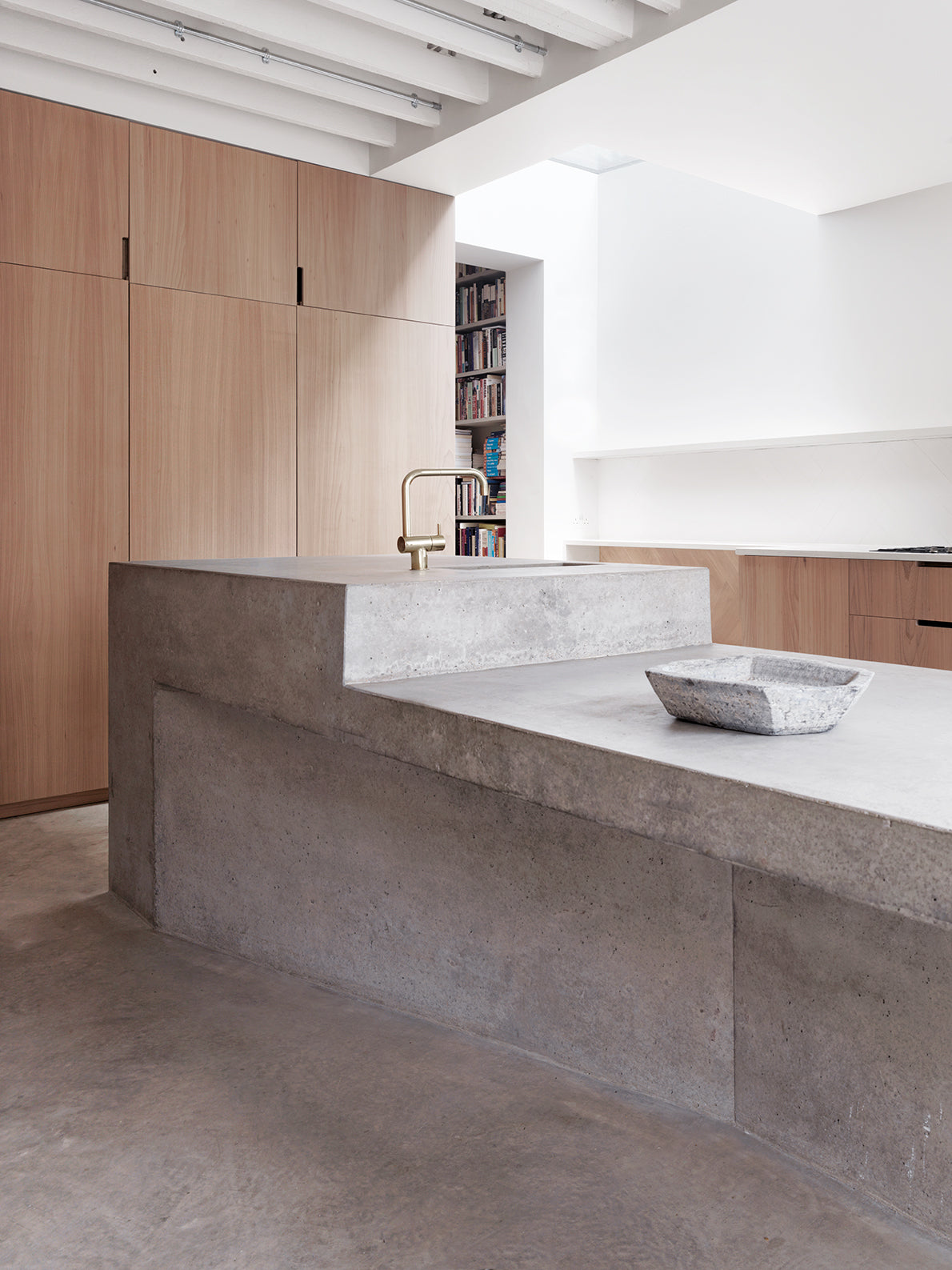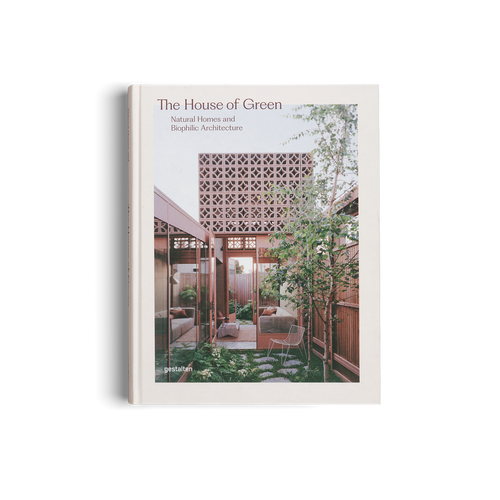
04/2020 architecture & interior
“Inspiration comes first,” says interior stylist and creative director Alex Kristal when asked about how to approach designing a new kitchen. The former decorating editor of British Elle Decoration recommends spending a good deal of time collating images from various sources—whether from magazines, design blogs, or Pinterest—to define your aesthetic. The next step is to make that look work for your budget and your lifestyle.

Kate and Ewan Thompson approached McLaren Excell when they decided to extend and refurbish their Victorian terraced house in London. Concrete was their point of reference, they used warmth and richness against the cool swathes of smooth concrete. (Photo: Richard Leeney for McLaren Excell, Kitchen Living)
“Whatever style you aspire to can be translated into something more affordable,” says Kristal, but that’s not the only constraining factor. “Functionality is paramount,” she adds. “You see images of kitchens that look beautiful but they’re completely unsuitable for daily use, and that’s often down to the material choices.” For example, if you love the look of marble but want to use it on a countertop, you might be wise to consider a composite stone that looks just as good but is more durable, less porous, and potentially cheaper. “It’s really about understanding how your chosen materials will react, both initially and over time,” she says. In addition to durability, your material palette will affect how your kitchen weathers passing trends too.
Natural materials rarely date and are an easy way to liven up a minimalist scheme. Salvaged elements bring their own brand of timelessness and can be an affordable way to create a kitchen with a huge amount of character. “Be sure to source reclaimed timber and fittings from a reputable dealer,” cautions Kristal. “And remember that while you might save money on materials, installing salvaged pieces can sometimes be a costly process.”

Founded by Arne Munch in the 1960s, Uno Form revolutionized the Danish market. Today they are known for their ability to combine natural materials and puristic design with a high level of craftsmanship. (Photo: Uno Form, Kitchen Living)
If budget is a concern, you can’t beat plywood for versatility at a good price. “If you pick the right grade, it’s incredibly strong. It can be easily colored and customized, and can be used to build almost anything,” she affirms. She also recommends Valchromat, an easy to work with MDF substitute that comes precolored in a range of different shades.
While Kristal’s own design preferences tend to prioritize simplicity, she notes that in general, people are becoming more experimental with their kitchen interiors, happily mixing materials and introducing accents of color and pattern. “I think people are starting to get a bit more playful, particularly with tiles,” she says.

Office S&M was asked to bridge high-quality materials and design solutions to propose something special on a budget for Valetta House. In the kitchen, a splashback of color and vibrant tiling was used to add warmth inside and make space appear grander. (Photo: French & Tye for Office S&M, Kitchen Living)
“And not just with the designs themselves, but how they’re used within the space.” Whatever materials you choose, Kristal believes that practicality is the key to a kitchen that is as enjoyable to live with as it to look at. “It’s worth considering that almost half the time spent in the kitchen involves cleaning it, so if you’ve got lots of grooves, gaps, and cracks between the various elements, it makes the task more arduous.”
Investing in the parts that get the most wear and tear is another recommendation, whether that’s brassware, cabinet handles, or surfaces. “It’s the most used room in the house, after all,” she says. “And a few highend fixtures can totally transform a highstreet kitchen.”
Step into our tasteful guide of kitchen interior and architecture. Available in German and English.












